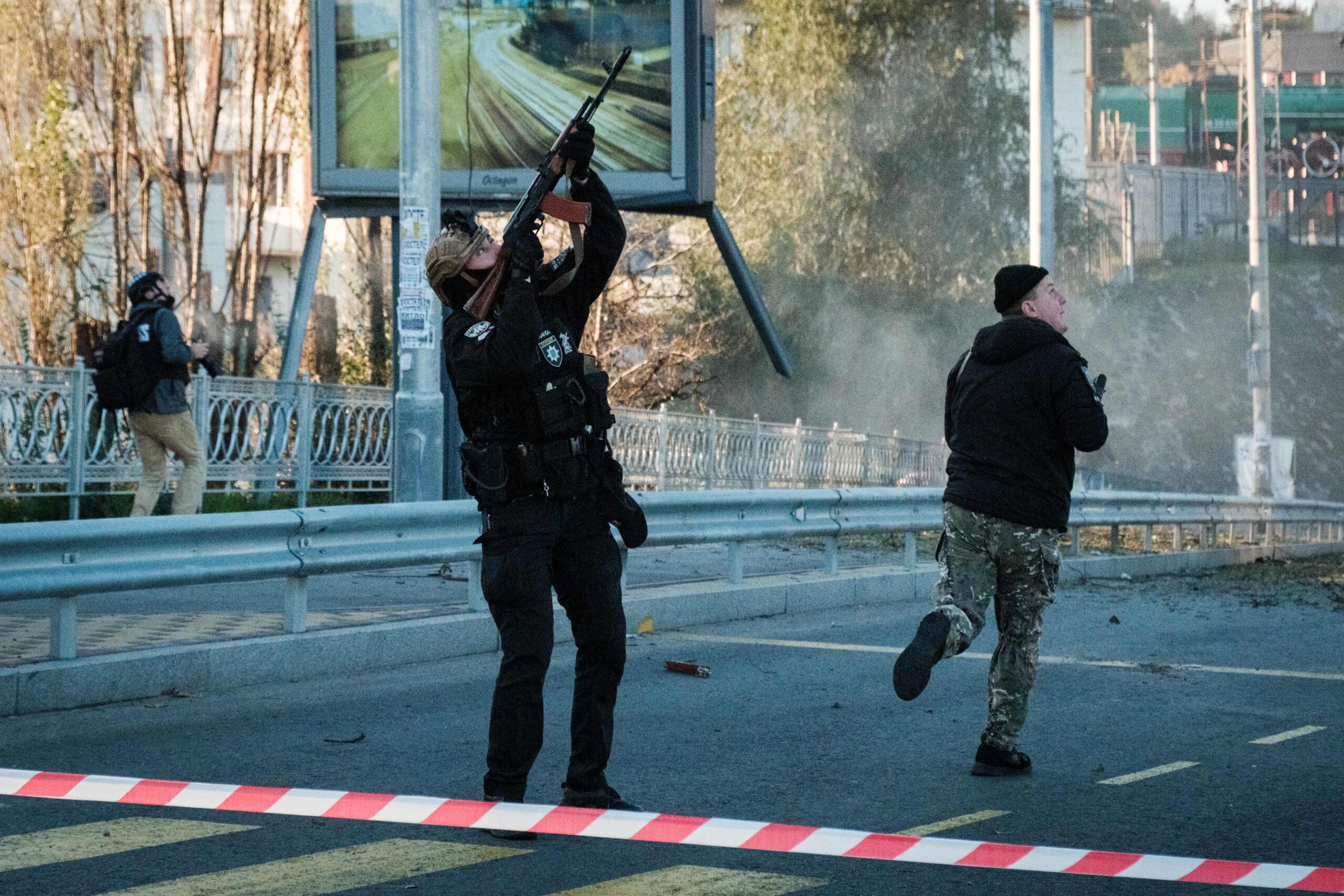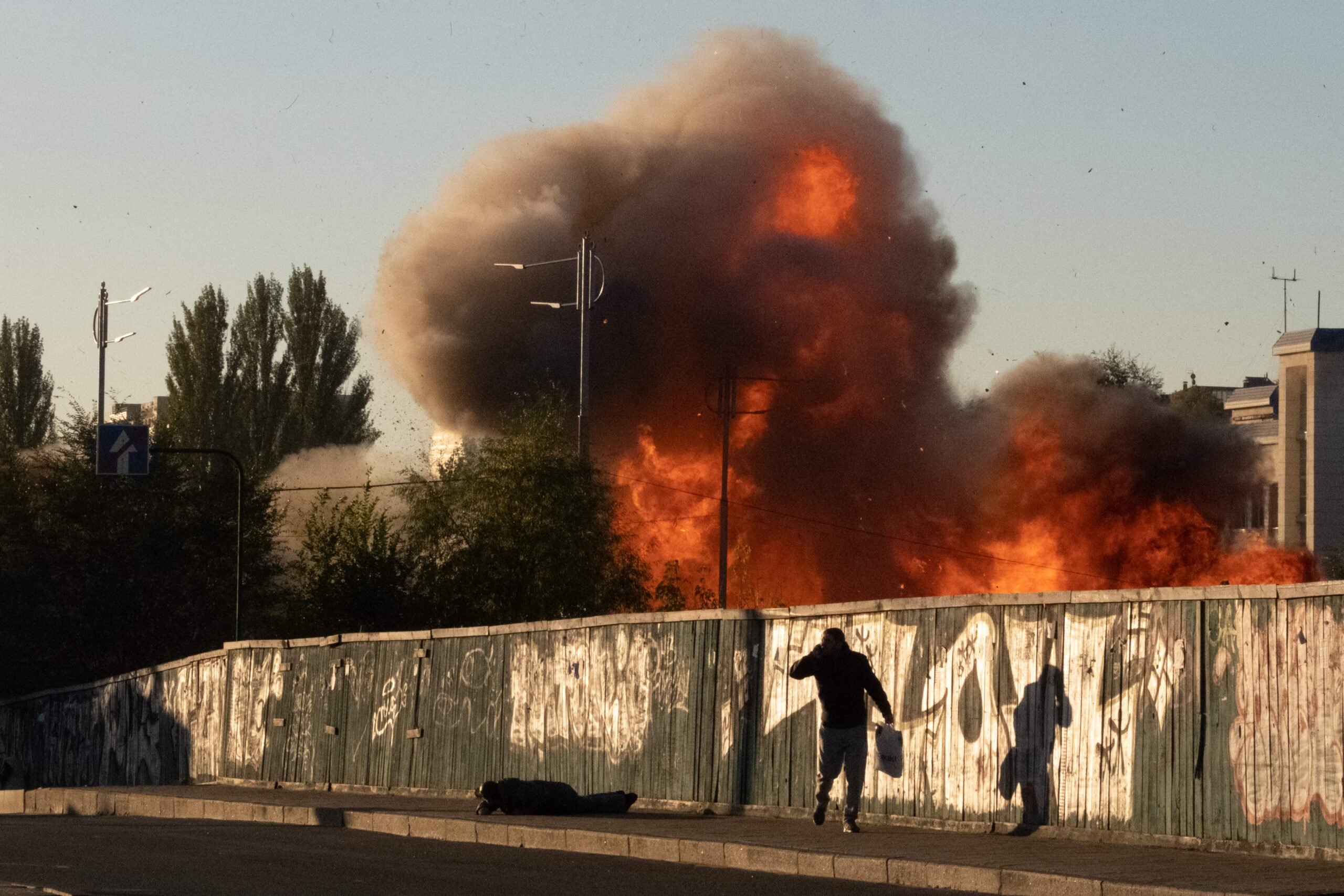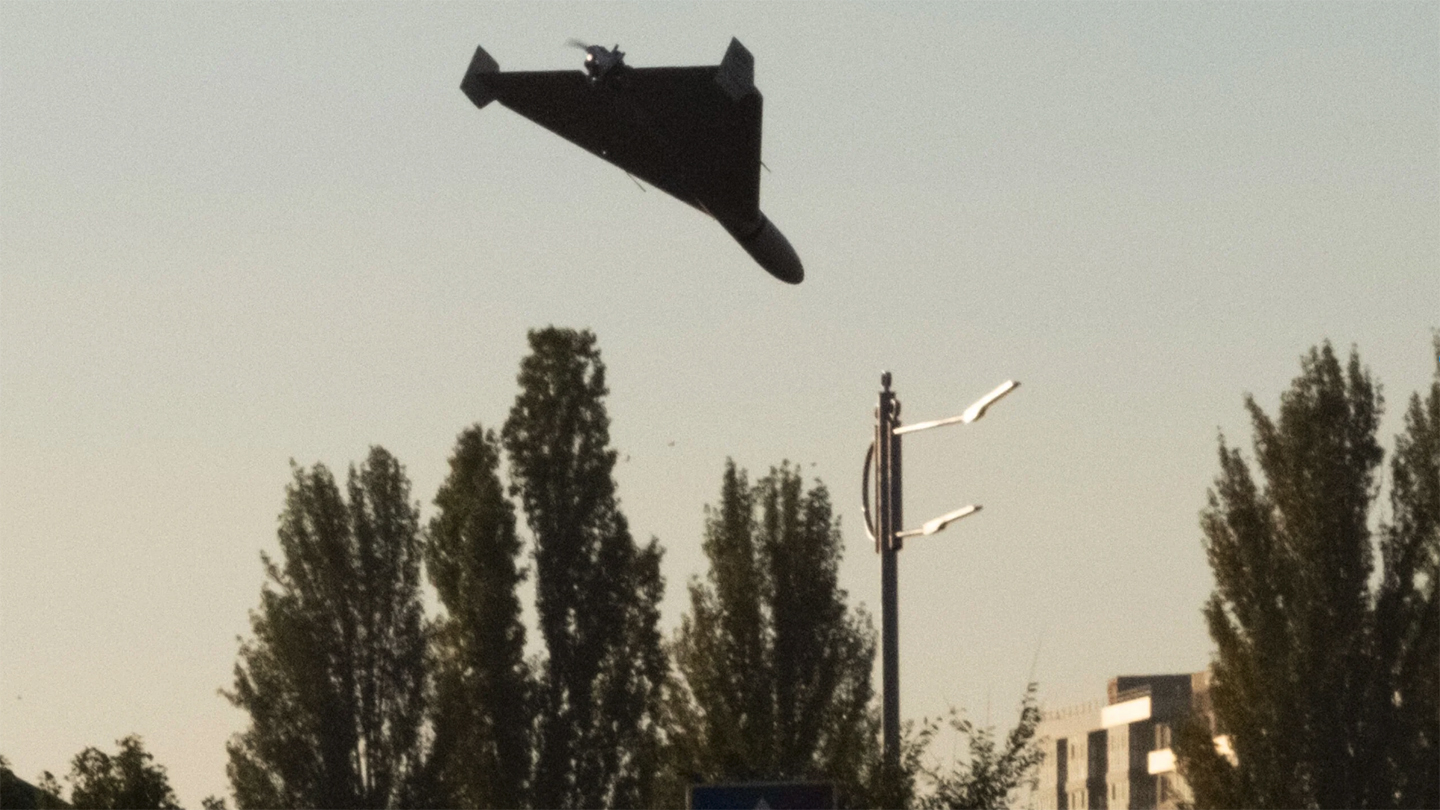A deluge of extraordinary imagery from Ukraine shows exactly what it’s like when relatively unsophisticated ‘kamikaze drones’ are thrown into battle en masse, striking population centers and critical infrastructure. Today’s Russian drone attacks, using the Iranian-supplied Shahed-136, and perhaps others, have killed at least four people in Kyiv and hit other targets across the country. Desperate scenes show defenders, including soldiers and police officers, and apparently also civilians, taking aim at the incoming drones using assault rifles and other small arms.

So far, reports from Ukraine suggest that at least four people were killed — among them, a pregnant woman — by the drone strikes in a four-story apartment building in downtown Kyiv, which was hit during morning rush hour. Many more had to be rescued from the rubble. According to Ukraine’s Interior Minister Denys Monastyrskyi, an undisclosed number of people have been killed in other cities, too.

Other targets in Kyiv apparently included an operations center related to the city’s heating network.
“All night and all morning the enemy terrorizes the civilian population,” President Volodymyr Zelensky said on the Telegram messaging app. “Kamikaze drones and missiles are attacking all of Ukraine.”
“The enemy can attack our cities, but it won’t be able to break us,” Zelensky added. “The occupiers will get only fair punishment and condemnation of future generations. And we will get victory.”
The Russian Ministry of Defense described the operation as a “massive” attack on military targets and energy infrastructure across Ukraine that involved the use of “high-precision weapons,” and Russia denied that civilians were targeted.
This is the second wave of major Russian strikes on Ukraine in the space of a week. Compared to last Monday’s raid, however, which involved significant use of cruise and ballistic missiles, today’s airstrikes appear to have been spearheaded by Shahed-136 drones, known to the Russian military as Geran-2.

Multiple photos and videos from Ukraine show the Shahed-136s carrying out their attacks today, which involve the drones flying a one-way mission to pre-planned coordinates, which they dive on and slam into before their explosive payload detonates. It seems the sheer numbers of these drones involved in the raids made their interception difficult, although they are by no means easy to counter at the best of times, despite their relatively low-end technology. They fly low and relatively slow and have small radar and infrared signatures, making them a challenge for even advanced air defense systems.
Nevertheless, Kyiv claims to have shot down 37 Russian drones since Sunday evening. Those numbers cannot be independently verified.
The mayor of Kyiv, Vitali Klitschko, said that 28 drones were directed against the capital itself, flying in successive waves, and that “a total of five explosions were heard in Kyiv.”
A spokesman for the Ukrainian Air Force claimed that 13 or more of the drones were shot down in the Kyiv region, all of them flying in from the south.
Outside of Kyiv, known targets of the drone attacks included the Everi marine terminal in the southern city of Mykolaiv, late on Sunday. According to local officials, this damaged sunflower oil storage tanks and set some of them ablaze.
“This is an entirely civilian facility. There is no military,” said Andriy, 47, a senior manager at the plant. He also condemned Russia for its attempt to “destroy the economy and to destroy food security.”
There have also been suggestions that today’s attacks are, at least in part, intended in revenge for Ukraine apparently having hit Russian targets within the Belgorod region, close to the Ukrainian border. You can read more about that here. The wreckage of one of the drones used today appeared to carry the words: “For Belgorod.”
Despite all the footage and images of the Iranian drones’ use in Ukraine, as well as intelligence dating back to early summer, Iran has continued to deny that it’s supplied them to Russia. In the face of Tehran’s protestations, a number of European Union foreign ministers have called for a new round of sanctions against Iran for its support for the Russian war effort — provided there is concrete evidence of Iranian involvement. Even if Russia were already building Shahed-136 drones itself, it’s inconceivable that it would be able to do this absent Iranian support and approval.
Regardless, just as we predicted, there are many reports now that Russia is buying thousands more of the drones and possibly other similar types from Iran. Isreal, which is supposedly sharing intelligence with Ukraine on these systems but will not supply weapons to Kyiv, would undoubtedly be taking a high interest in these developments. In particular, assessing how the influx of cash and whatever else Russia is providing in exchange for these capabilities, as well as speeding up the evolution of their standoff weapons technology, would impact its national security.
Meanwhile, Ukrainian presidential adviser Mykhailo Podolyak took to Twitter to write: “Iran is responsible for the murders of Ukrainians. Country that oppresses its own people is now giving ru-monsters [Russians] weapons for mass murders in the heart of Europe.”
Condemnation of Russia from the international community has also been swift. The U.S. Embassy in Kyiv described the drone attacks as “desperate and reprehensible.”
Ukrainian Air Force spokesman Yuriy Ihnat admitted that the swarms of kamikaze drones posed a particular difficulty for the country’s air defenses, which have only very recently begun to receive more modern Western equipment. Video footage from Kyiv appeared to show at least one shoulder-launched surface-to-air missile being fired, ineffectively, against one of the drones.
“The challenges are serious because the air defense forces and means are the same as they were at the beginning of the war,” Ihnat said.
While the Shahed-136 is bigger and faster than many of the small commercial drones being used in the conflict, with a fairly substantial warhead and big standoff range, its relatively low cost (reportedly around $10,000 to $20,000 apiece) means it’s a significant cost-exchange mismatch to use surface-to-air missiles or even fighter jets firing missiles to defeat them. This is an issue that has affected Saudi Arabia, in particular, as it tackles Houthi drones (and cruise missiles). For instance, each new AIM-120 AMRAAM built today, the same type used in NASAMS air defense system Ukraine is getting, cost $1M. Luckily, NATO has a lot AIM-120s in its arsenal because Ukraine will likely be gobbling them up soon.
Meanwhile, there are now increasing numbers of reports suggesting that Iranian-made ballistic missiles may also be headed to Russia, something that we had predicted could make a lot of sense for Russia. An equally proven set of weapons for this level of strikes, missiles like the Iranian Fateh-110 would be similarly useful for attacking static Ukrainian targets, whether military or civilian. You can read out full report on this here.
Combined with the very visible threat posed by the Shahed-136s, this will surely result in further calls to bolster Ukraine’s air defenses against these and other threats.
Contact the author: thomas@thedrive.com
